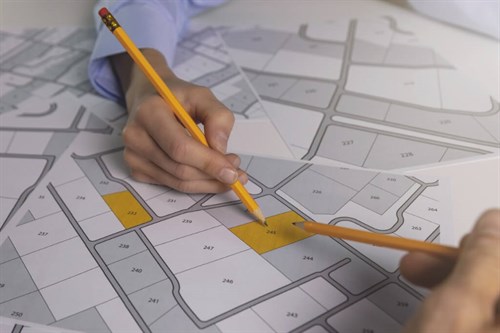HOA Transition from Developer
We are often asked, “When should we start preparing for our HOA to transition from a developer-controlled board to a homeowner-controlled board?” Our answer is always the same, “starting on day one from when the developer first hires a professional management company.”
Setting up a community for a successful transition begins with ensuring the community will be financially stable once the Developer is no longer involved. The AAM Developer Services department begins work with our developers months, if not years before construction commences. This process begins with preparing the initial budget to determine the reserve requirements and set the assessment rate. At the request of the Developer, AAM will also conduct a thorough review of the governing documents to ensure they align with state and federal laws. Thus, anticipating any concerns that may arise for a community down the road. Setting an appropriate assessment rate and having the proper documentation in place sets the foundation for the association. However, remaining vigilant by taking additional steps beginning on the first day of management will contribute to a successful transition.
Below is an outline of best practices to follow leading up to an HOA transition from Developer to homeowner control.

COMMON AREAS
After the common areas have been installed and the Developer is ready to transition maintenance to the association, it is important that the condition of the common elements is documented. An inspection should be conducted to ensure that everything is installed per plan and that the common areas are in good condition at the time. Once the association has accepted maintenance, there should be regular inspections to monitor the condition of the common areas and improvements thereon, ensuring any concerns are addressed as needed. It is good practice to audit the community for any maintenance items that may need attention at least a year prior to transition. This allows time for any maintenance concerns to be addressed while the Developer still controls the board. Failure to properly maintain the common elements throughout development can lead to problems at transition.
In addition to maintenance, the Developer should take appropriate steps to confirm that ownership of common area parcels has been conveyed to the association. Some counties grant special valuation of common area parcels for tax purposes, and additional steps should be taken to ensure that all parcels have been submitted for special common area valuation with the county. Failure to do so can lead to substantial tax bills for the association in the future. This can be a simple process for smaller communities, but developers should consider having an HOA attorney audit more complex communities prior to the transition to ensure all parcels have been deeded and valued properly.
FINANCIALS
The developer board should constantly be evaluating the financial condition of the community to ensure that the association is financially stable, has a balanced budget, and has an appropriately funded operating account and reserve account. By the time of transition to homeowner control, the association should be self-sufficient. If there are deficiencies being funded by the Developer leading up to the transition, that is an indication that the assessment is set too low. By monitoring the financials through development, the developer board can ensure that appropriate assessment increases are taken to provide sufficient income at the time of transition to cover anticipated expenses.
Every community should have a reserve study in place which lays out a plan for the repairs and replacements of common areas. It is prudent to thoroughly review the reserve study to make sure that all common area improvements that should be funded are included. Studies should be updated at least every three years, unless the CC&Rs require more frequent updates, to make certain that the association’s reserve account is sufficiently funded at the time of transition. Failing to adequately fund reserves is a common area of contention with homeowner boards following the transition.
Although there is no statutory requirement to complete a reserve study or ensure the association is adequately funded, the non-profit corporation act does require directors to act in good faith, with the care of an ordinarily prudent person in a like position would exercise under similar circumstances and in a manner, the director reasonably believes to be in the best interest of the corporation. In addition, there is common law through the Restatement Property (Servitudes) which is a court-made law as a result of prior court opinions. Sub-Section 6.20 includes Developer’s Duty to the community that states that until the Developer relinquishes control of the association to the members, the Developer owes specific duties to the association and its members to include establishing a sound financial basis for the association, maintain records, and to account for the financial affairs of the association and to disclose all material facts affecting the financial condition of the association.
DOCUMENT & ORGANIZATION
Approaching transition, it is prudent to ensure the association is well organized. Association records should include all pertinent documents, including CC&Rs with any and all recorded amendments, plat maps, common area tract deeds, and other recorded documents, signed Bylaws, filed Articles of Incorporation, and any working documents adopted by the developer board. Files should include all current contracts, insurance policies, financial records, and development plans, as well as minutes from any association meetings. In addition to organizing the association’s records, it is wise to confirm that the association is in good standing with the Secretary of State or Corporation Commission.

TRAINING
Four months to one year prior to transition, depending on the size and complexity of the community, a Transition Committee consisting of homeowners should be organized. This Committee will go through a series of training sessions regarding the inner workings of the association and the responsibilities of board members. This is a good time for the management company to educate and build relationships with homeowners who will hopefully go on to run for the Board of Directors. Additional training for board members following the transition will further contribute to a successful transfer of control.
Our ultimate goal with any transition is for the homeowners to take control of the association and move forward with a good relationship with the Developer. Homeowner concerns with the Developer may arise within a few months following the transition. However, sometimes situations arise years later. As such, the management company must diligently follow up on any concerns and initiate discussions with the Developer to resolve issues amicably. In our experience, following these best practices and having the best team in place from day one of management will assist in a smooth and successful transition.
